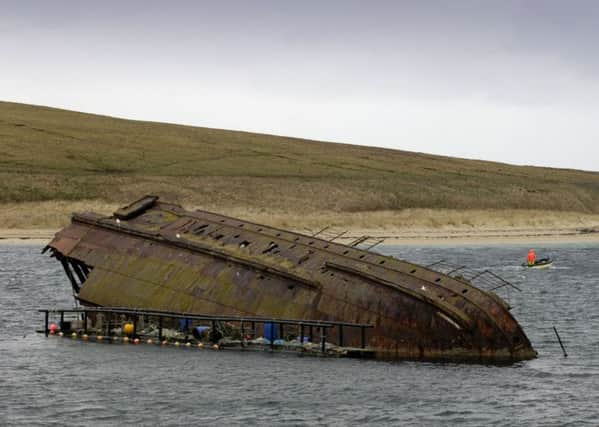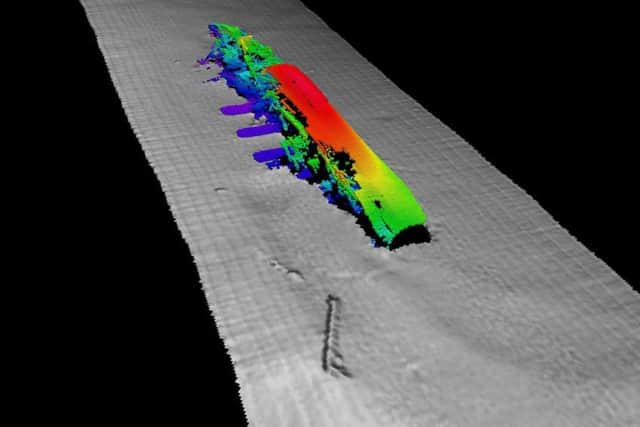Hi-tech hunt for Scotland’s shipwrecks reaps rewards


Scotland’s often treacherous coastline is littered with 1,800 known wrecks stretching from the Shetland Islands to the Solway Firth.
The Royal Commission on the Ancient and Historical Monuments of Scotland (RCAHMS) has charted and mapped nearly 18,000 maritime losses in Scottish from the 17th century to the present day.
Advertisement
Hide AdAdvertisement
Hide AdNow, maritime explorers such as Patrick Crawford, 32, of Utility ROV Services in Glenrothes, Fife, say telecommunications industry technology is being used for shipwreck exploration to great effect.


Devices such as fibre optic ropes, acoustic cameras and underwater robots that can travel thousands of miles are transforming deep sea finds.
Patrick has worked on several deep sea wrecks with his parents – veteran shipwreck salvagers Moya and Alexander Crawford.
They include passenger liner the SS Persia, which was torpedoed in the First World War and searched by the family near Crete in 2004. A haul of rubies, diamonds and Veuve Clicquot Champagne was made.
Patrick said: “Things have changed massively over the years and the amount of information that can be retrieved by the subsea guys is now phenomenal.
“A lot of the kit is now being taken from the telecoms industry, such as fibreoptics which are allowing us to get to depths which we could never have achieved be before.”
Patrick has been able to gather information from as deep as 3,300m, using visual and acoustic cameras operated remotely from ships positioned above the potential salvage site.
He said: “When you get down to a certain level you get the dust kicking up from the sea bed and the visibility goes and you can’t see anything.
Advertisement
Hide AdAdvertisement
Hide Ad“You would have to wait till that clears, but now with the acoustic cameras you can keep going. They see the same way that a bat sees. It allows us to work in zero visibility. There are obviously air diving limits which mean you can only go so far.”
Patrick said he had been “very lucky” to learn from his father, who has been diving to wrecks off the coast of Scotland since he was young.
He added: “My father started off diving on shallow water wrecks but there is lots of competition on them so you go deeper and deeper and then it gets expensive.
“The deeper you are, the more obstacles there are.”
Patrick breaks down wrecks using giant cutters whose design is based on kit found in the construction industry.
Fibre ropes, lighter than conventional metal wire ropes, are then used to winch up the pieces of interest.
He added: “Even in the past ten years the technology has been advancing at a huge rate. It’s a bit like mobile phones, everything is getting smaller and cheaper.”
Robotic underwater “Seagliders” have been devised by the Oban-based Scottish Association for Marine Science, with it claiming the kit signalled a “major change” in the way oceanographers collect information. The 6ft-long vessels – which look like portable buoys – can spend months at sea collecting data.
While the information contributes to an understanding of climate change, it can also be used by shipwreck hunters to gauge exact conditions surrounding the wrecks.
Advertisement
Hide AdAdvertisement
Hide AdPatrick says non-professionals are free to “look at but not touch” wrecks, with insurance companies often owning the remains of the vessel – and any remaining contents.
However, in some cases, efforts could be made to recover something off the wreck to prove it had been located – and gain the rights to recover the cargo.
The finders usually get a cut of the value of the find after declaring the bounty with The Receiver of Wreck, who insures interests of both salvor – the salvager – and owner are taken into consideration.